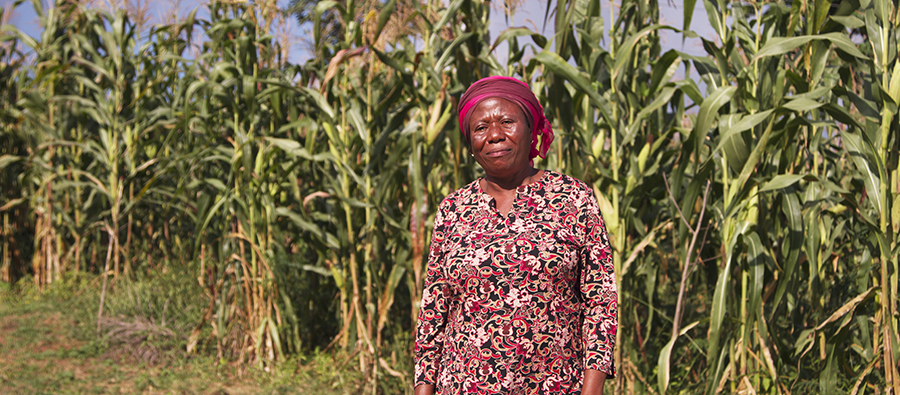MaryLucy Oronje, Knowledge Bank Coordinator, at CABI East Africa writes about the efforts underway to tackle fall armyworm, which has devastated crops in 44 African countries.
Since fall armyworm was confirmed in Nigeria in early 2016, it has conquered at least 22 million square kilometres, expanding into 44 African countries by July 2018. In Africa alone, fall armyworm has the potential to cause maize yield losses of 8.3 to 20.6 million metric tons per year. Earlier this year, the pest was also confirmed in India, where it is likely to spread throughout Asia.
Since the start of the year, there have also been at least 14 interceptions of commodities such as babycorn, cut flowers, coriander, and capsicum in the European Union infested with fall armyworm, suggesting that it may begin to affect trade. With its continued move across the globe, studies have been carried out to try and map out where fall armyworm could arrive next.
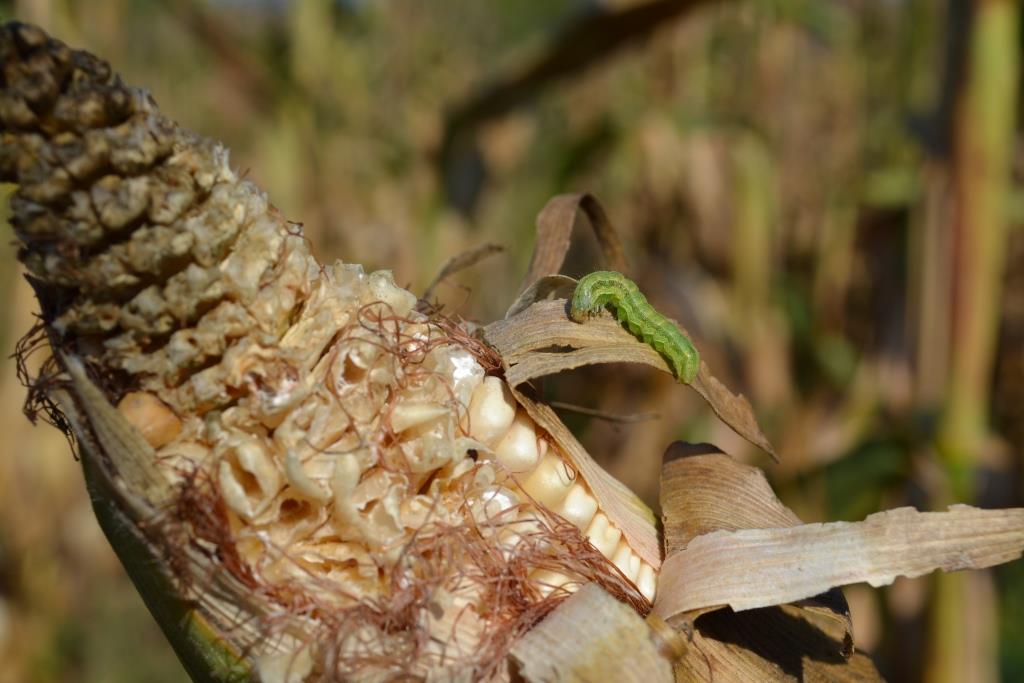
In Africa, there has been a huge, concerted effort in the fight against fall armyworm in many ways from a number of organisations. Initially governments distributed free pesticides. However, this was largely viewed as an emergency measure and likely not sustainable. The combined cost of pesticides across Africa could run into the millions of dollars.
The work on fall armyworm in Africa has been extensive and far reaching, across a number of areas.
On the ground – supporting extension work
Working with extension agents is key to ensuring farmers are getting the best advice for their crops. This knowledge can be disseminated in a number of ways such as CABI’s Plantwise clinics where extension officers working as ‘plant doctors’ use tools like Pest Decision Management Decision Guides to give best practice advice. Not only do the tools need to be kept up to date, extensionists themselves must be well-trained on new methods and outbreaks.
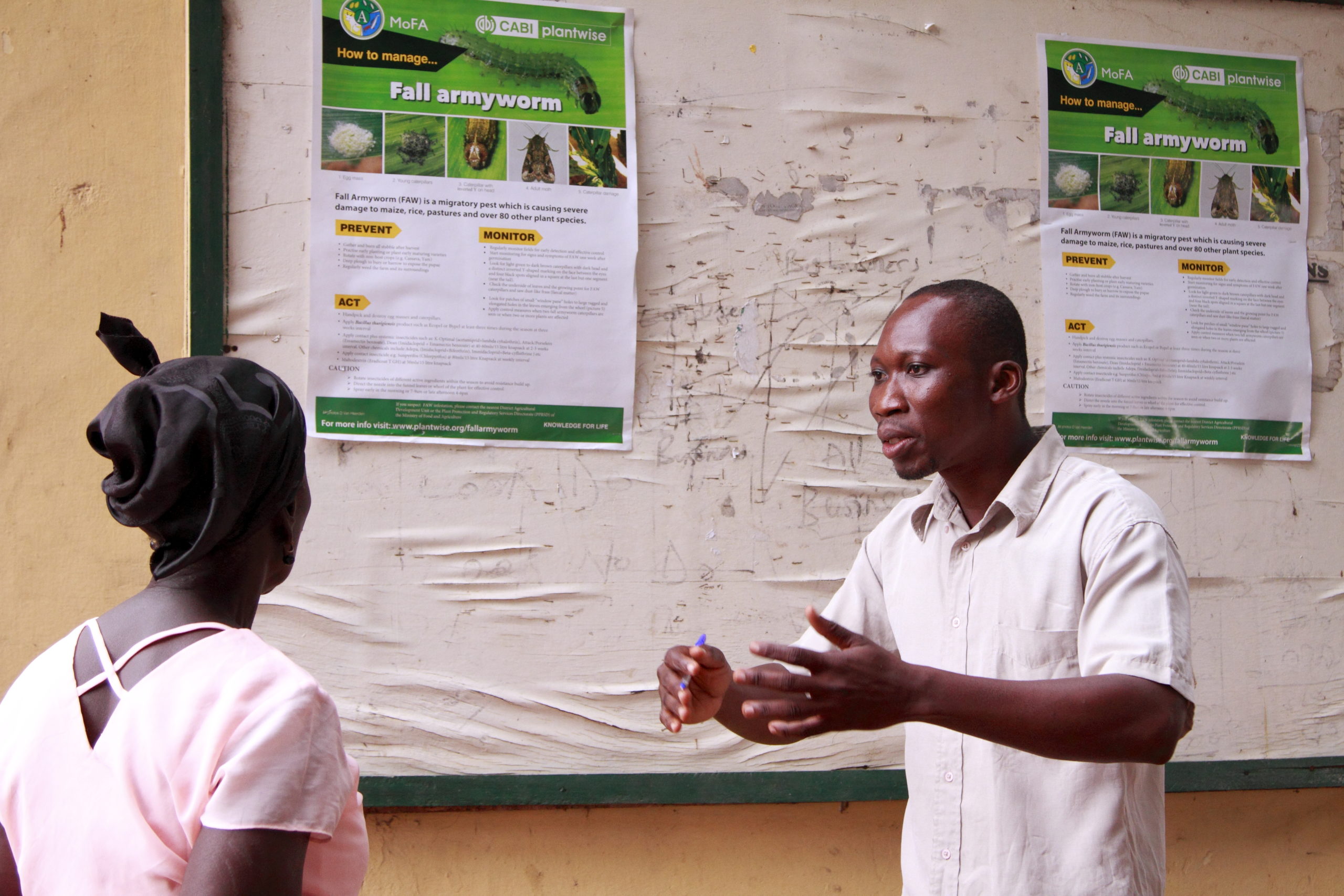
Furthermore, it’s vital that all members of the farming community are included. CABI, in collaboration with Pest Control Products Board and Agrochemicals Association of Kenya have participated in training agro-dealers in the safe use of pesticides and Integrated Pest Management so that they stock the right pesticides and also help farmers make the right choices.
In the lab – continued research
Continued scientific research is important for finding newer and better solutions to fight fall armyworm. A number of biocontrol methods are being studied and tested, including the exotic egg parasitoid, Telenomus remus, which is widely used in the Americas to control fall armyworm is being tested in South Africa as a naturally occurring way to combat fall armyworm. In addition, CABI’s experts in the biological control of agricultural pests and diseases have conducted the first major study of potential biological controls for fall armyworm control in Africa.
Organisations including CIMMYT, IITA, ICIPE, AATF, and CABI are also looking into a range of areas such as host plant resistance, mating disruption and insect-resistant (Bt) maize.
On the go – investing in tech
Making use of technology in development is a growing and important field. By providing digital tools, data and information can be supplied and collected much faster. An example of a data collection tool is the FAMEWS App from FAO.
The app is used by all members of the farming community – from plant protection officers to the smallholder farmers – to collect data on pheromone trap catches during scouting. These traps help lure the fall armyworm and bring it under observation. The data is then used to better understand the lifecycle of the fall armyworm and the extent of the infestation; mapping out fall armyworm risk.
Another digital tool is CABI’s Pest Risk Information Service (PRISE) which uses satellite technology for fall armyworm management. Farmers receive timely warnings about the risk of fall armyworm outbreaks and are advised on appropriate measures to protect their crops.
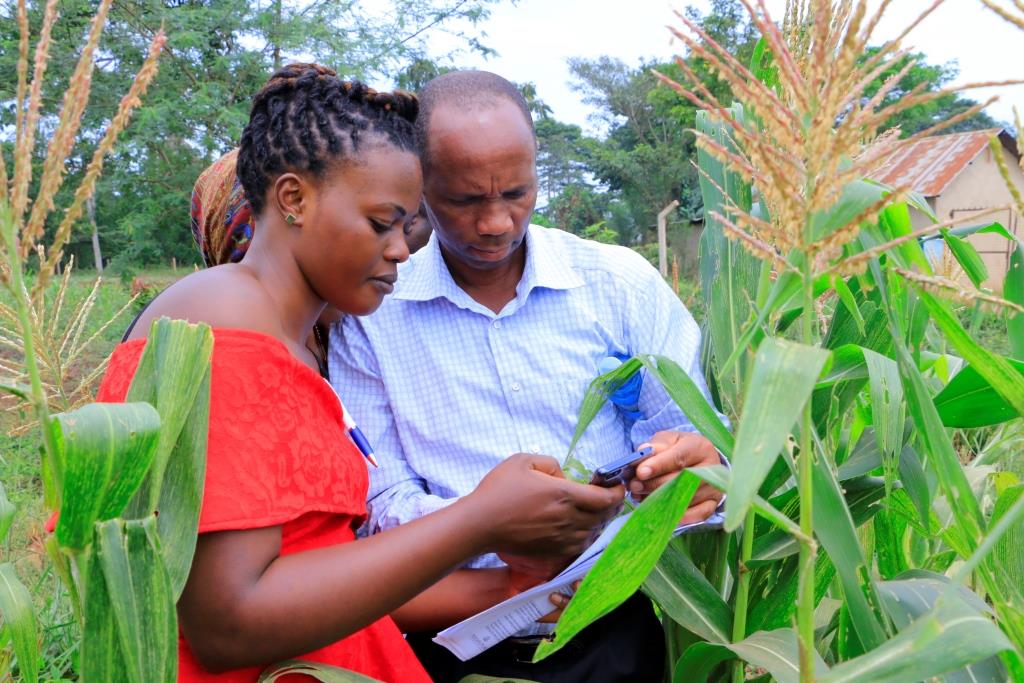
In the field – working with farmers
Empowering farmers by giving them the skills and knowledge they need to combat pests and diseases is fundamental. Ensuring they know how to monitor their crops to detect fall armyworm eggs and larvae can inform immediate management decisions.
Without action, there would undoubtedly be a huge impact. Fall armyworm has the ability to lay up to 1,000 eggs and migrate long distances on prevailing winds. It breeds continuously throughout the year wherever there are host plants available. This means that fall armyworm infestations can still occur off-season as long as climatic conditions are favourable. In light of this, it appears that this crop pest will become a resident in the crop fields of Africa, all year round.
Data from these communities is useful for identifying fall armyworm hot spots and free zones as well as discovering which management techniques are working. Indigenous knowledge can also be gathered from these communities, which can be verified and scaled up.
CABI’s Fall Armyworm Portal pulls together resources from a number of sources, making it a one-stop shop for the latest material on managing fall armyworm.
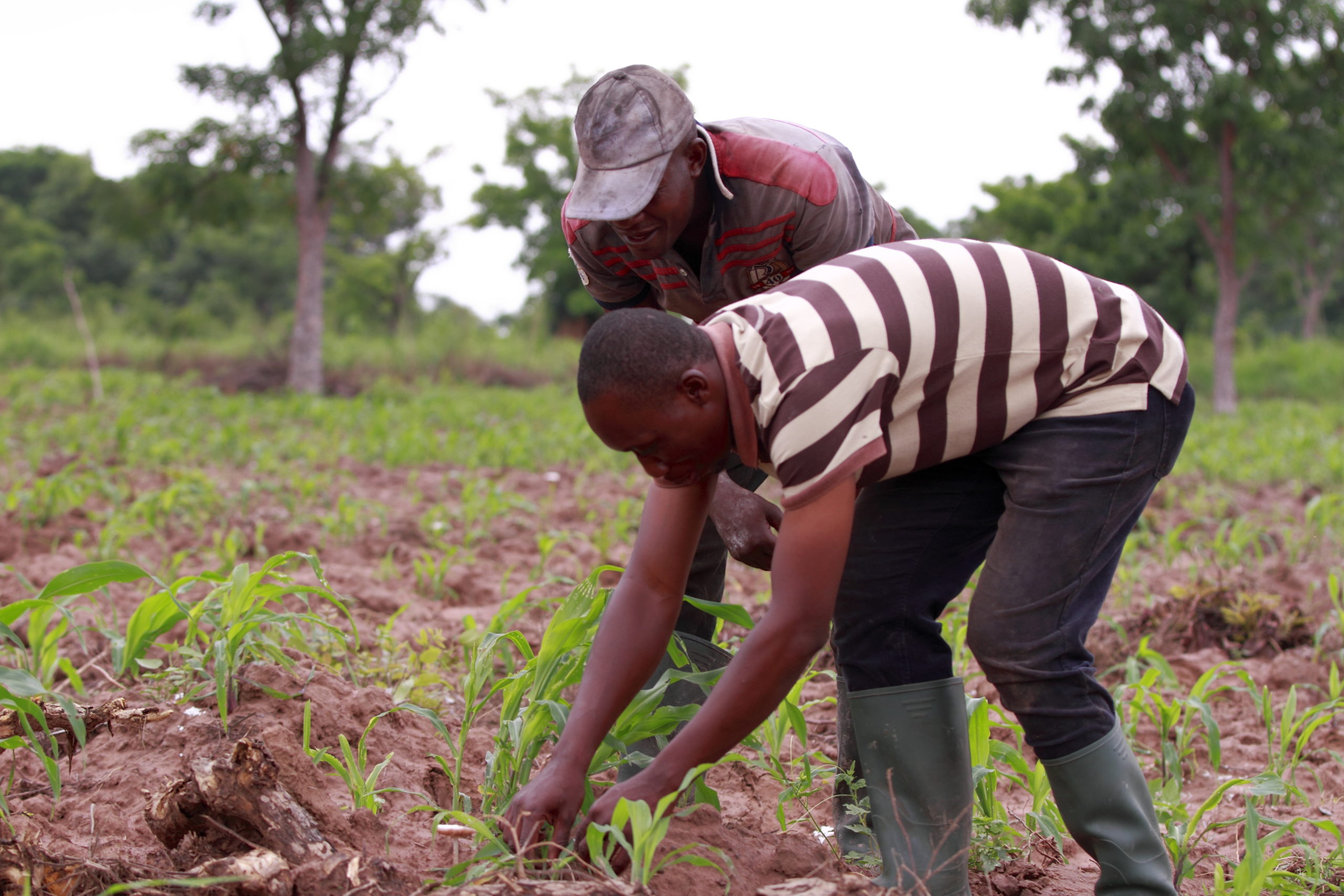
How did fall armyworm spread so rapidly across Africa?
There are three reasons:
- Lack of an early warning and detection system (including pest risk analysis and quarantine surveillance)
- Lack of emergency response systems
- Weak capacity and systems to control plant disease in some countries
There is a lack of coherent strategy across a number of African countries for dealing with invasive species such as fall armyworm, that would enable the shift away from reactive responses. For instance, farmers could get rapid access to cheap and lower-risk solutions if governments had a conducive policy for subsidies. The cost benefits of prevention will be so much more than the costs of control.
Fall armyworm, like most other invasive species problems, is multi-dimensional. No institution or country can properly manage it alone. International cooperation is needed in cross-cutting research, partnerships and outreach, and fundraising for sustained campaigns and action. Moving forward, there needs to be strong enabling policy and commitment from all stakeholders to be able to deal with fall armyworm, and other invasive species that may threaten Africa.
Featured photo credit: CABI
